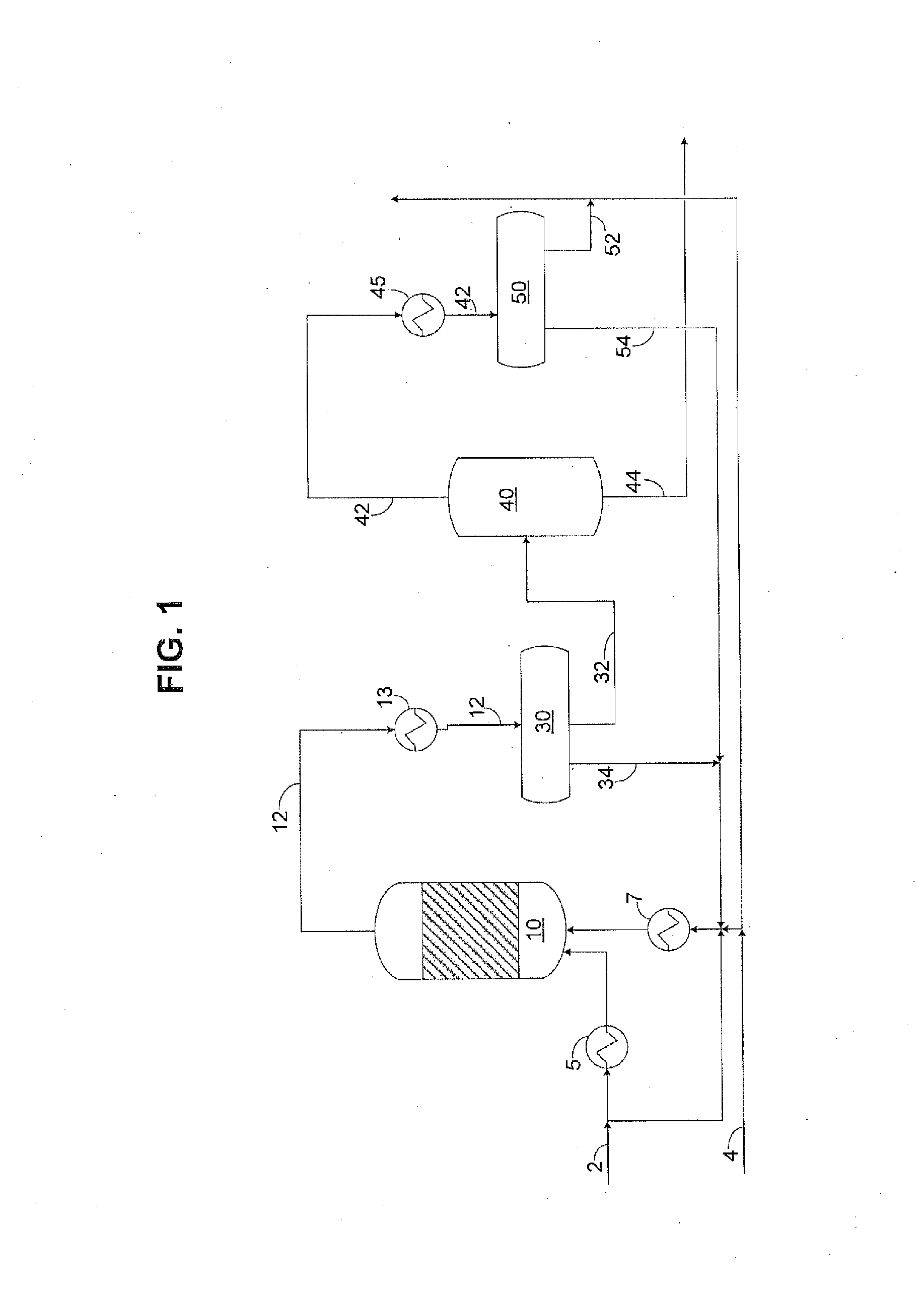Method for contemporaneously dimerizing and hydrating a feed having butene
a butene and dimerization technology, which is applied in the direction of hydrocarbon preparation catalysts, hydrocarbon oil treatment products, hydrocarbon preparations by hydroxy group addition, etc., can solve the problems of incompatibility with existing transportation facilities, grain ethanol is expensive to produce, and further limitations exist with respect to the use of grain-based fuels, etc., to achieve a more favorable forward reaction and increase the effect of research octane number
- Summary
- Abstract
- Description
- Claims
- Application Information
AI Technical Summary
Benefits of technology
Problems solved by technology
Method used
Image
Examples
examples
[0054]The following examples are given for the purpose of illustrating embodiments of the present invention. However, it is to be understood that these examples are merely illustrative in nature, and that the process embodiments of the present invention are not necessarily limited thereto.
[0055]The following experiments were conducted at a pilot plant. In the first example, isobutene was used as the feedstream. The catalyst was Kairui Chemicals D008 (wet) with a total of 157 g of catalyst being loaded into the reactor. The reactor was maintained at temperature of approximately 150° C. and a pressure of about 70 bars. The isobutene feed had a flow rate of approximately 0.5 mL / min. The water had a flow rate of approximately 0.1 mL / min. This flow rate therefore yields about a 1:1 molar ratio of water to isobutene. The results of the first experiment can be found in Table II and Table III, below:
TABLE IIProduct Distribution and YieldsButanolOligomersConversionButanolDIBButanol / Exp. #(g)...
PUM
| Property | Measurement | Unit |
|---|---|---|
| Percent by mass | aaaaa | aaaaa |
| Percent by mass | aaaaa | aaaaa |
| Weight | aaaaa | aaaaa |
Abstract
Description
Claims
Application Information
 Login to View More
Login to View More - R&D
- Intellectual Property
- Life Sciences
- Materials
- Tech Scout
- Unparalleled Data Quality
- Higher Quality Content
- 60% Fewer Hallucinations
Browse by: Latest US Patents, China's latest patents, Technical Efficacy Thesaurus, Application Domain, Technology Topic, Popular Technical Reports.
© 2025 PatSnap. All rights reserved.Legal|Privacy policy|Modern Slavery Act Transparency Statement|Sitemap|About US| Contact US: help@patsnap.com



